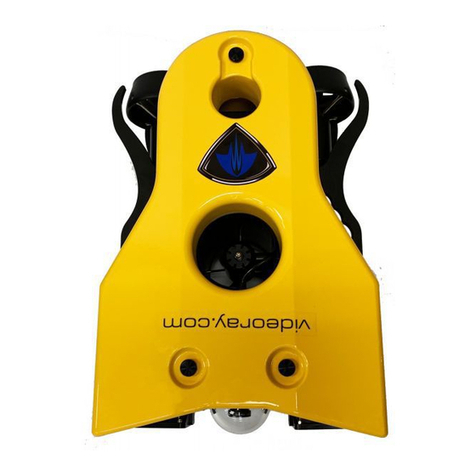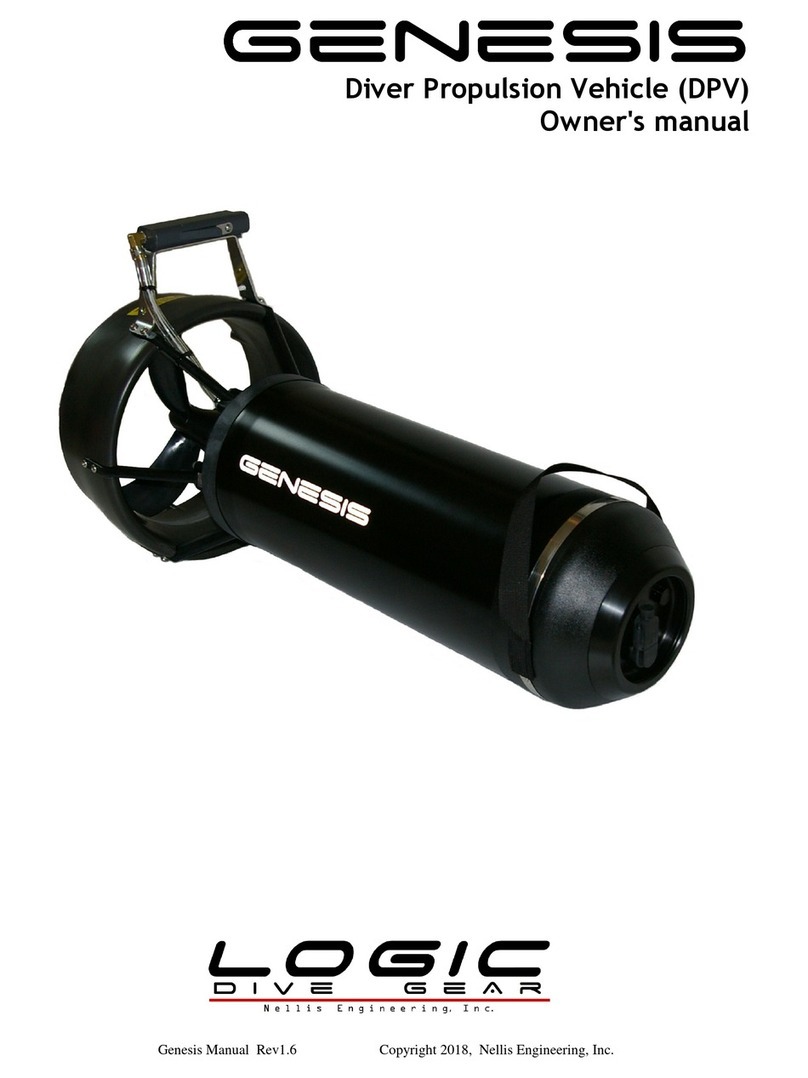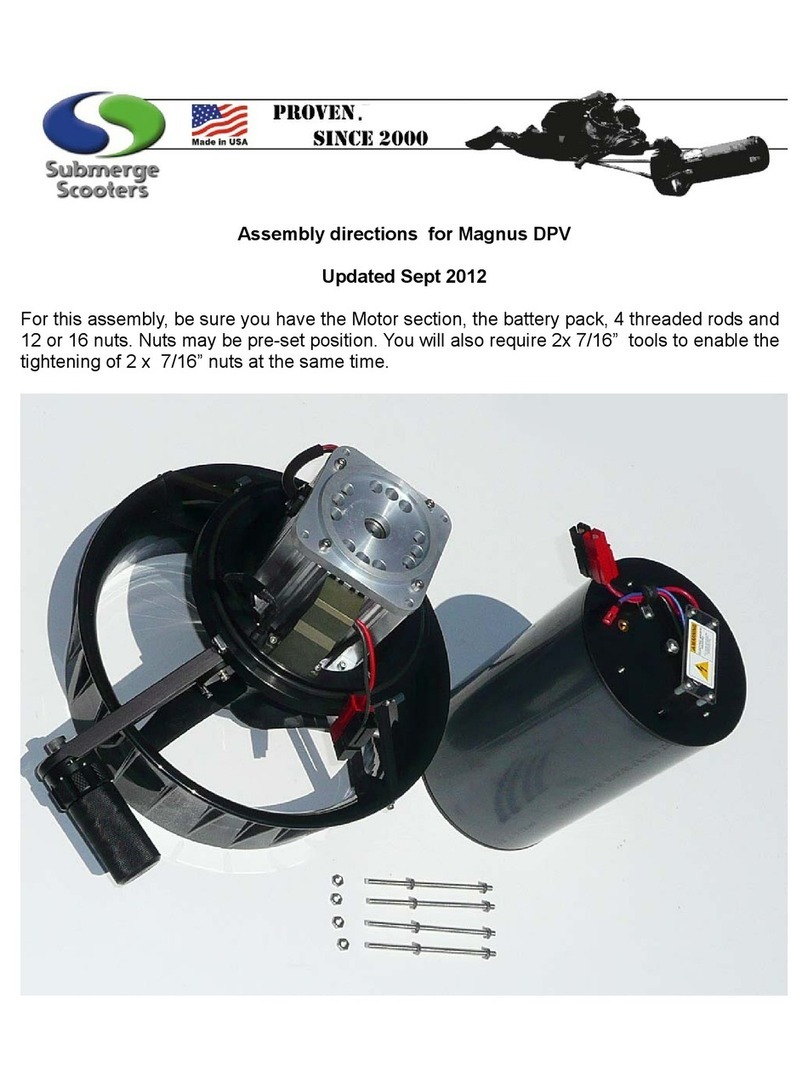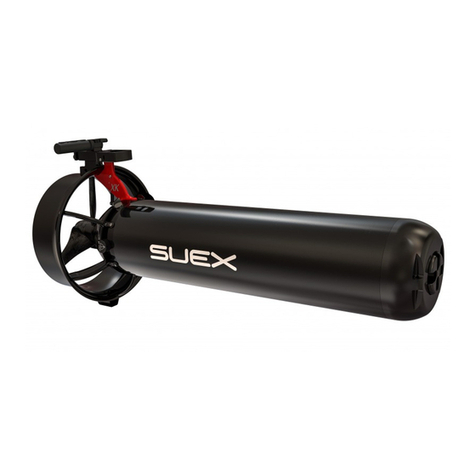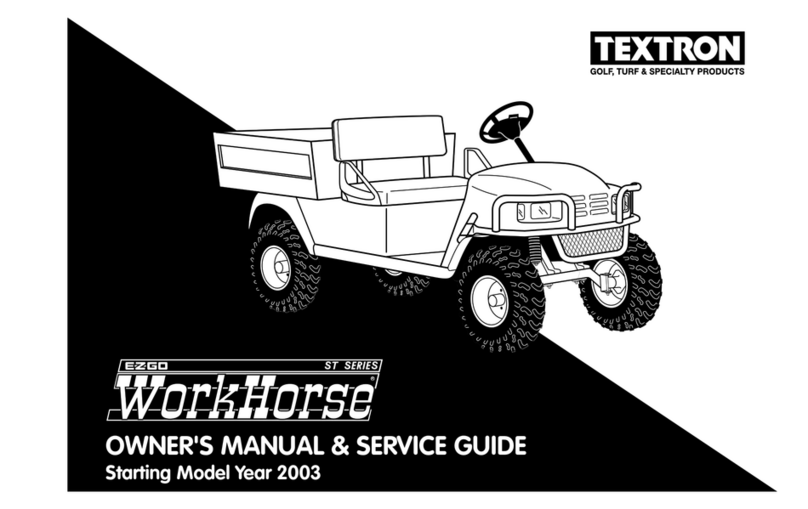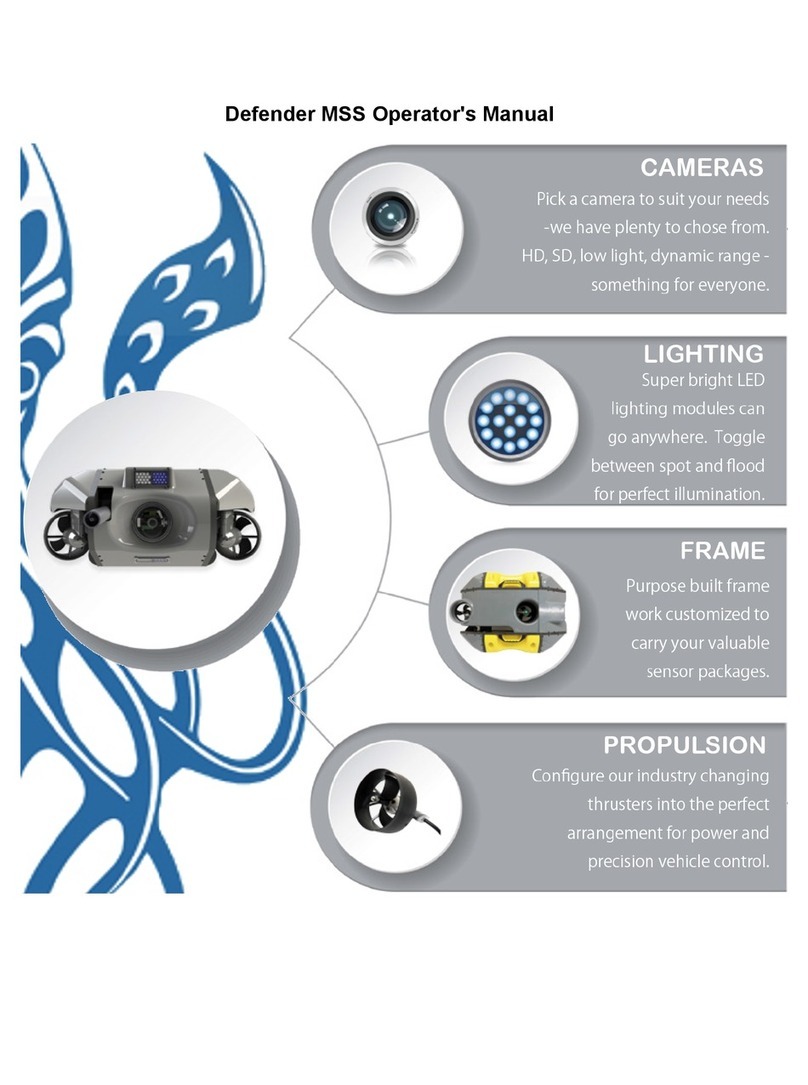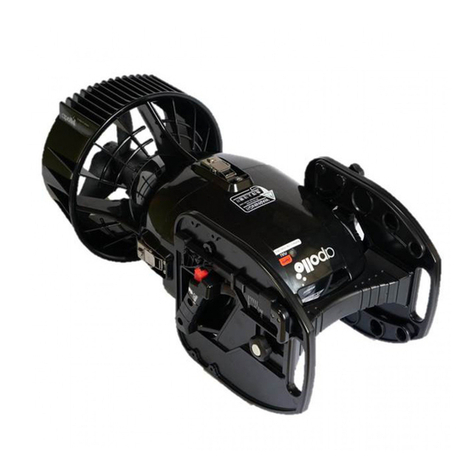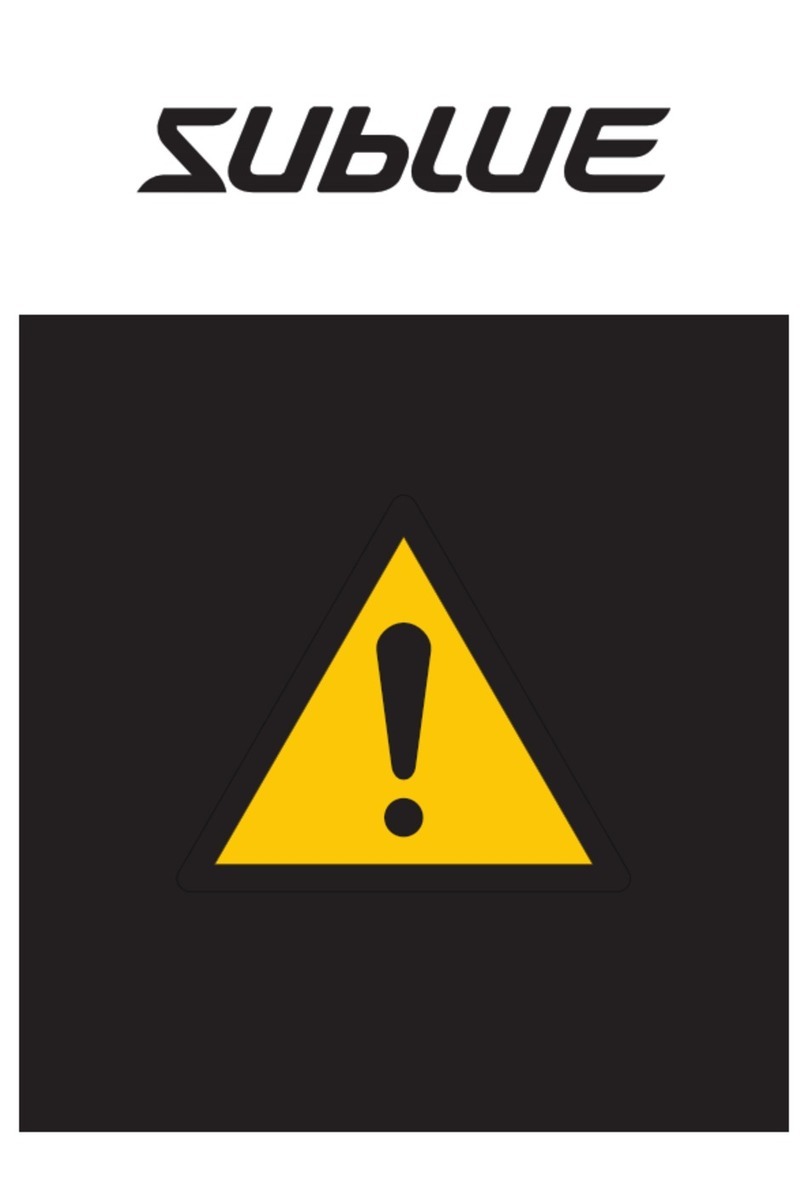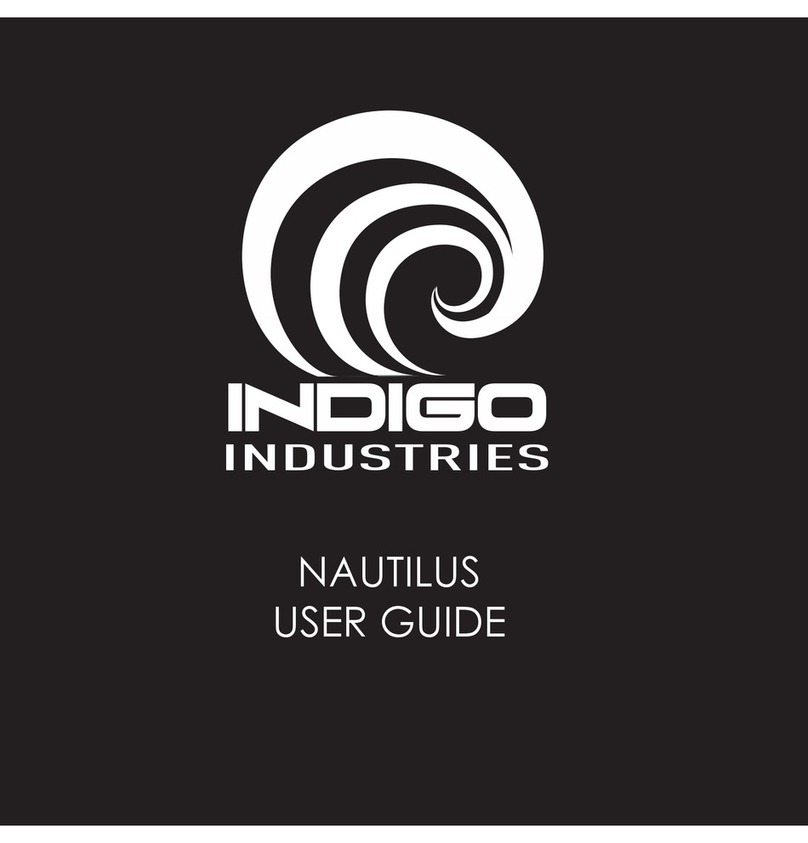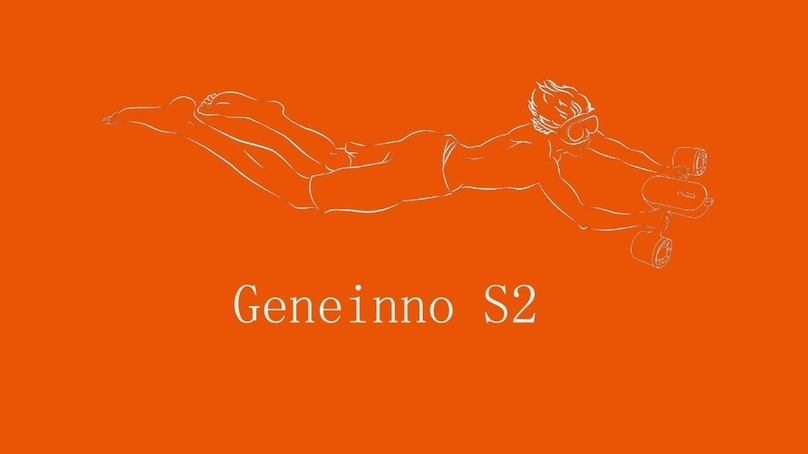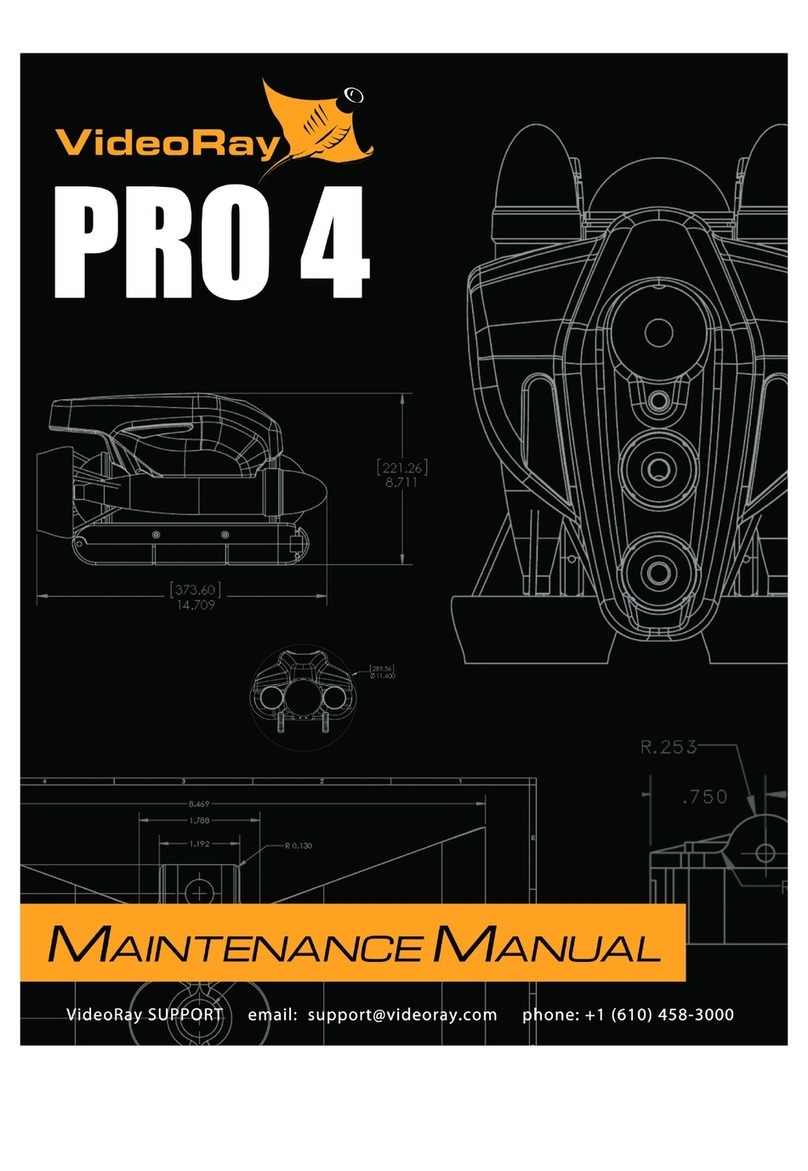
2.3 Safety Instructions
Read and observe all notes and instructions before installation, operation, repair,
maintenance and replacement of accessories.
Non-observance of safety notes and instructions can result in serious injury.
Keep the operating manual in a safe place and make it available to the person
responsible for operating the vehicle
2.3.1 General Safety Instructions
► Disabling or overriding safety devices is prohibited and can lead to serious injury or
death.
► Only trained and experienced swimmers over 16 years of age may use the Aquajet.
► Persons with pacemakers are not allowed to use the Aquajet.
► Pregnant women must not use the Aquajet.
► Persons under the influence of alcohol, medicine or drugs must not use the Aquajet.
► The Aquajet may be used only by completely healthy persons. Even the use of the
Aquajet with a minor cold can lead to slight to severe personal injuries.
► When using the Aquajet a life jacket must be worn.
► Diving goggles must be worn for better visibility.
► To prevent the body from cooling down, a diving suit should be worn.
► Touching the screws is forbidden.
► It is forbidden to remove the protective fins.
► The Aquajet must never be left unattended to avoid use by unauthorized persons.
► The battery may only be changed on land.
► Repair and maintenance work may only be carried out by a technician authorized by
JAMADE GERMANY GMBH.
► Changing or modifying the Aquajet is prohibited. Changes may reduce the effectiveness
of the safety measures and increase the risks for the operator.
► If the Aquajet is damaged, it must be taken out of operation immediately. Contact the
manufacturer or your specialist dealer.
► The operator is obliged to handle the Aquajet responsibly and carefully and to take all
necessary precautions to avoid damage to the Aquajet and to himself and other persons.
► The Aquajet may only be used in protected waters and in the company of others or under
constant supervision of another person. This ensures immediate assistance in case of
injury.
► The Aquajet must not be used in strong currents, strong winds, bad weather or poor
visibility. Failure to observe these instructions may result in serious or fatal injuries to the
operator or other persons.
► The Aquajet must not be used in strong waves (wave heights up to 0.3 m and occasional
waves with a maximum height of 0.5 m). The Aquajet can injure the operator or other
persons.
